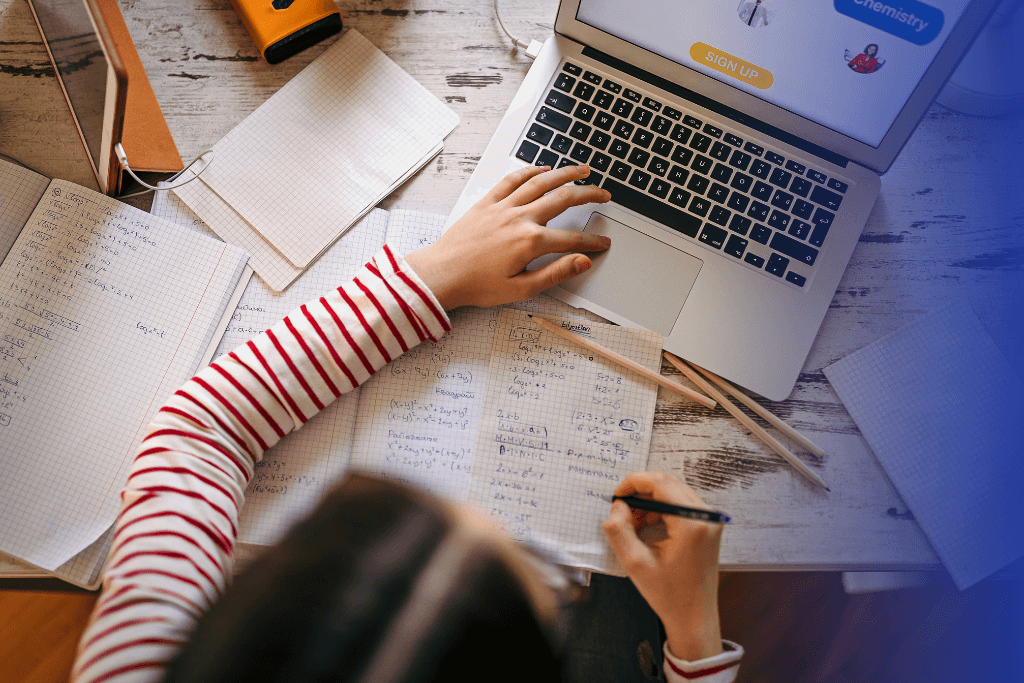
Independent learning, also known as self-learning, is becoming an increasingly popular approach to acquiring knowledge, particularly in the field of foreign language learning. Although this method has many advantages, it requires a great deal of self-discipline and the right approach to be effective. In this article, we will present how to effectively approach self-learning, the challenges it poses, and the steps worth taking to achieve your desired goals.
What will you find in this article?
- What is self-learning?
- How to plan independent language learning?
- Advantages and disadvantages of independent learning
- Summary – self-learning in practice
What is self-learning?
Self-learning is a method of acquiring knowledge where you learn independently, without direct support from a teacher or instructor. It requires the learner to take full control of the learning process – from selecting materials and setting goals to assessing progress.
Although it may sound demanding, it offers tremendous freedom in adjusting the pace and method of learning to individual needs.
How to plan independent language learning?
You are your own captain, ship, and vessel. When you decide to learn independently, you must determine:
- what you want to learn,
- when you will study,
- which learning aids you will use,
- how you will check your progress.
These four basic principles can pose a significant challenge for you.
As you can see, self-learning requires a good plan and the right approach. Discover the key steps that will help you effectively plan self-learning.
1. Setting goals
Start by determining exactly what you want to learn. Set a main goal, such as „I want to speak English fluently,” and then break it down into smaller intermediary goals, like „I will learn 1,000 new words” or „I will understand simple dialogues in films.” Remember, goals should be realistic and measurable.
2. Time management
One of the biggest challenges of self-learning is time management. Establish a regular study schedule and try to stick to it. Adapt your study time to when you are most productive – morning, evening, or during the day.
3. Choosing the right materials
Selecting the right materials is crucial for successful self-learning. Use a variety of sources such as textbooks, mobile apps, audiobooks, or online courses. Avoid random materials – focus on tried and tested, recommended sources.
4. Checking progress
Regularly monitoring your progress will help maintain motivation and adjust your learning method if something isn’t working. You can use online tests, apps to track results, or simply assess your skills during conversations in a foreign language. It’s important to know which stage of learning you are at.

Advantages and disadvantages of self-learning
Self-learning, despite its many advantages, also has its downsides, challenges, and limitations. Below, we present both the benefits and difficulties associated with this method of learning.
Advantages of self-learning
Self-learning has many advantages that attract individuals wishing to learn independently:
- Flexibility – you can learn anywhere and at any time.
- Adjusting the pace – you adjust the learning pace to suit your capabilities and preferences. –
- Individualisation – you choose the materials and learning methods that best suit your needs.
- Cost-saving – no expenses related to classes at a language school or with a tutor.
Challenges and limitations of self-learning
While independent learning offers a great deal of freedom, it is not without its challenges:
- Lack of motivation – maintaining regularity without external supervision can be difficult.
- Difficulty in assessing progress – without a teacher, it is harder to identify mistakes and evaluate your skills.
- Wide choice of materials – it’s easy to get lost in the abundance of available content, especially if you lack experience in selecting them.
- Challenges in creating an effective study plan – without the right knowledge, it’s difficult to plan your learning in a way that is effective and aligned with your goals.
Summary – self-learning in practice
Self-learning is a great way to grow, especially if you have strong motivation and want to learn at your own pace. However, remember that independent learning requires a good plan, appropriate materials, and consistency. If you’re just starting your journey with self-learning, approach it with an open mind and patience – the results will surely surprise you.
If you’re unsure whether self-learning is the best way to learn, check out our post – private lessons: the biggest competitor to language schools!
